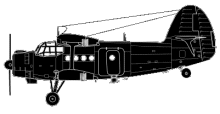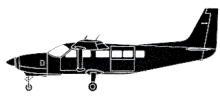Incident Overview

Description
A Boeing 737-300 cargo plane, operated by Serve Air, suffered a runway excursion and nose gear collapse after landing on runway 07 at Lubumbashi International Airport, D.R. Congo. The aircraft departed Kinshasa-N’Djili Airport on a cargo flight to Lubumbashi. A training captain was seated on the right and the trainee captain on the left seat. The third pilot had the role of safety pilot. The trainee captain was on his fifth line training flight. At Lubumbashi, the crew was cleared for an instrument landing procedure for runway 07. In the pre-landing briefing, AUTO BRAKE 2 mode was selected for deceleration of the aircraft. No anomalies or technical malfunctions were reported to ATC. The weather conditions were good with calm winds. On landing, the aircraft landed in the touchdown zone according to the crew, the rollout on the runway appeared normal, and deceleration was progressive. At about 80 knots, the crew noted that the aircraft was diverging to the left of the runway centreline. The crew immediately switched to manual braking, but to no avail, the aircraft continued the skid until it went off the runway and came to a stop, leaving the right main gear on the runway. The nose landing gear, passing over the less compact shoulder, became bogged down and then broke off. The left main landing gear, with the weight of the aircraft, also dug in so that the left engine touched the ground. The aircraft sustained substantial damage in the area of the nose landing gear cage (wheel well). Contributing facts: (a) Reduction of simulator training hours for economic reasons for someone who has never performed the duties of controlling an aircraft on the ground. (b) The runway shoulders at Lubumbashi (Luano) do not have the same characteristics with regard to strength (see Annex 14 and Document 9157 Part 3). In conclusion, the actions taken on the rudder before it became ineffective must have been the cause of the aircraft’s deviation from the runway centreline and the loss of control of the aircraft (LOC-G).
Source of Information
http://times.cd/2018/03/04/un-cargo-de-services-air-fait-une-sortie-de-piste-a-lubumbashi/http://times.cd/2018/03/04/un-cargo-de-services-air-fait-une-sortie-de-piste-a-lubumbashi/Primary Cause
Reduction in simulator training hours for a pilot with no ground handling experience, coupled with the suboptimal conditions at the runway shoulders of Lubumbashi Airport.Reduction in simulator training hours for a pilot with no ground handling experience, coupled with the suboptimal conditions at the runway shoulders of Lubumbashi Airport.Share on:





